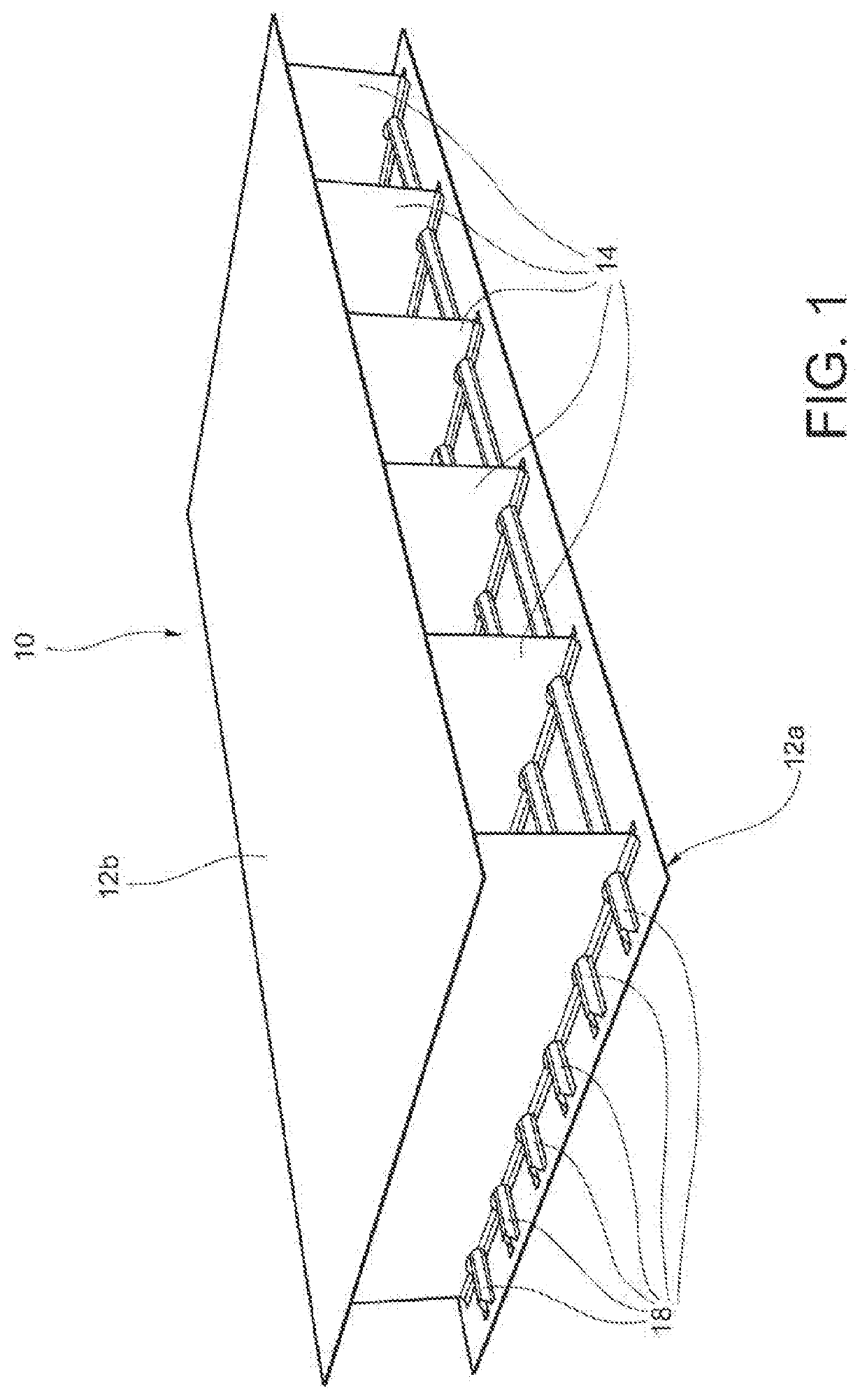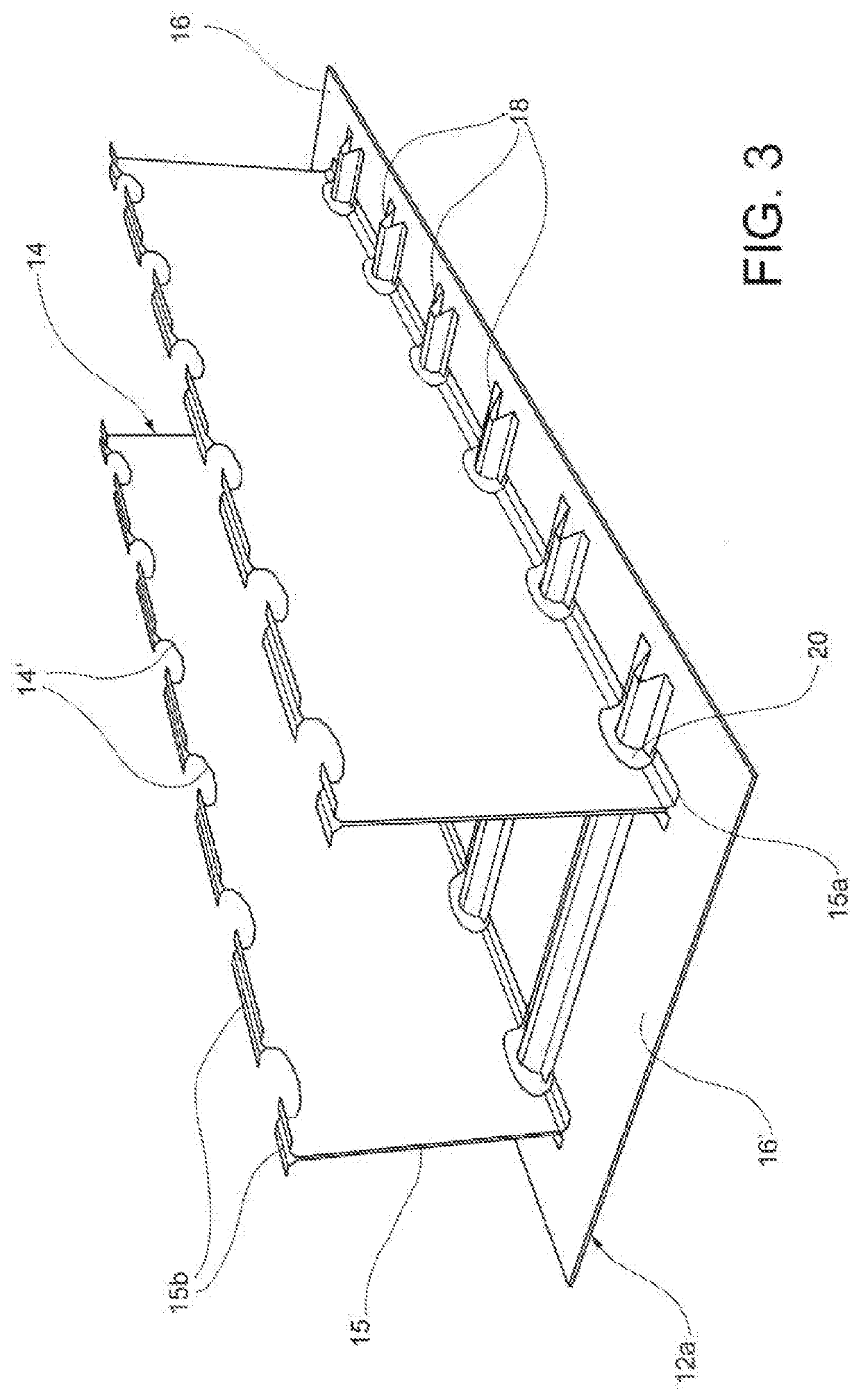Method for manufacturing a multi-ribbed wing box of composite material with integrated stiffened panels
a composite material and wing box technology, applied in the direction of stringers, other domestic articles, transportation and packaging, etc., can solve the problems of production cost, operating cost, weight of the structure, etc., and achieve the effect of complex configuration and greater torsional strength
- Summary
- Abstract
- Description
- Claims
- Application Information
AI Technical Summary
Benefits of technology
Problems solved by technology
Method used
Image
Examples
Embodiment Construction
[0023]In the present context, the term ‘longitudinal’ indicates a direction substantially coincident or parallel with that of the main extension of the wing or of the empennage, while the term ‘transverse’ indicates a direction substantially perpendicular thereto, identifiable, in general, with a direction substantially coincident or parallel with that of a wing or empennage profile.
[0024]With reference to the figures, an aircraft wing box as a whole is indicated with 10.
[0025]The wing box 10 comprises a first panel 12a, a second panel 12b, and a plurality of ribs 14.
[0026]The first panel 12a, the second panel 12b and the ribs 14 are made of composite material. Preferably, the composite material comprises a thermosetting or bismaleimide resin matrix and / or a carbon and / or glass fiber reinforcement.
[0027]The first panel 12a and the second panel 12b may be made in a similar way. In this example, for the sake of brevity, only the first panel 12a will be described, it being understood t...
PUM
| Property | Measurement | Unit |
|---|---|---|
| length | aaaaa | aaaaa |
| mass density | aaaaa | aaaaa |
| pressure | aaaaa | aaaaa |
Abstract
Description
Claims
Application Information
 Login to View More
Login to View More - R&D
- Intellectual Property
- Life Sciences
- Materials
- Tech Scout
- Unparalleled Data Quality
- Higher Quality Content
- 60% Fewer Hallucinations
Browse by: Latest US Patents, China's latest patents, Technical Efficacy Thesaurus, Application Domain, Technology Topic, Popular Technical Reports.
© 2025 PatSnap. All rights reserved.Legal|Privacy policy|Modern Slavery Act Transparency Statement|Sitemap|About US| Contact US: help@patsnap.com



